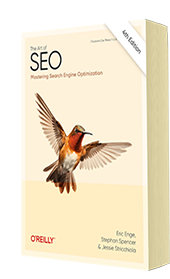Search Friendly CMS Does Not Equal Search Optimized One
Having a supposedly “search engine friendly” website isn’t all it’s cracked up to be. In fact, it can be quite a disappointment. That’s because it’s not the same thing as being “search engine optimized.” I’ve seen the words “search engine friendly” bandied about quite a lot, particularly to market and sell blog platforms, shopping carts, and content management systems. But buyer beware: That won’t necessarily correlate to high search engine rankings out of the box.
Make no mistake about it’there is a huge difference between implementing a “search engine friendly” platform versus architecting and building your website to be “search engine optimal.” Generally speaking, the term “search engine friendly” describes design elements, menus, URLs, content management systems and shopping carts that are easy to optimize, while search engine optimization is all about improving the volume and quality of search-referred traffic to a website.
It may indeed be true that a particular shopping cart or content management system (“CMS”) is elementally search engine friendly out of the box. Search engine friendly features of such a platform could include: a URL structure that doesn’t contain ampersands, an internal linking structure that is text-based by default rather than graphical, the elimination of session IDs from the URLs for spiders, no reliance on JavaScript actions for access to important website content, and so forth.
For the platform to qualify as “search engine friendly,” it mustn’t generate overly complex URLs with numerous ampersands and equals signs. In fact, ideally the URL should be completely devoid of ampersands, equals signs and question marks. But even so, those URLs won’t be in a search engine optimized state until the important and relevant keywords are embedded in the URL, with each word separated by hyphens rather than underscores (n.b. underscores are not treated as word separators by Google).
A search engine friendly shopping cart or CMS would also allow for inclusion of text-based bread crumb navigation. But, again, those links aren’t search engine optimized until they include relevant keywords in the anchor text.
You can’t always take someone else’s search engine friendly platform and work within the imposed constraints to make it search engine optimal. For example, many of the platforms out there won’t support the ability to vary a bread crumb’s anchor text from the category or page name. So if you wanted to revise it to a synonym or a longer phrase, you’d be stuck.
Not every supposedly search engine friendly shopping cart or CMS readily allows for the creation of unique, custom-written title tags either. If you can’t override the ‘automatic’ title tag (the one generated based on a recipe like “Site Name: Category Name: Product Name”) with one that is masterfully honed to that page’s keyword themes, that severely limits your ability to search engine optimize the site. Title tags are rendered search engine optimal only once they reinforce the targeted keyword phrases and incorporate other related keywords too, such as synonyms.
Moving to the search engine optimal state also requires an internal linking structure whereby text links to the most important pages (e.g. products, blog posts, articles, etc.) are placed as high up in the site hierarchy as possible (e.g. on the home page or secondary level pages).
These are the types of attributes that help a search engine friendly platform transform into a search engine optimized website. But we’re not truly optimal yet. The shopping cart or content management system must be flexible, to incorporate new elements that further enhance the site’s search engine visibility. For example, a tag-based navigation system,with tag clouds, tag pages, tag conjunction pages, links to related tags, etc.,could bring in an abundance of additional search traffic from “Long Tail” terms. This is achieved through an army of tag pages and tag conjunction pages, each targeted to particular keywords which have been assigned to various products or content pages as tags.
I have witnessed first-hand the power of tag pages to help boost search engine-referred traffic: within several months of implementing tagging across our corporate website, we saw a doubling in our page views! This sort of approach could be applied to many other types of websites,including online catalogs, online magazines, and of course blogs. A search engine friendly ecommerce platform isn’t likely to support tag clouds and tag pages because that is not a requirement of being search engine friendly, but it is an opportunity to reach a high-performing, search engine optimized state.
Search engine optimization doesn’t happen automagically; it requires real effort to extract top rankings from your chosen search engine friendly platform. If you’ve chosen the right platform,one that the vendor developed, from the ground up, with search engines in mind,your optimization job will be a lot easier.

Chapter 6:
Keyword Research
From the fundamentals of link building to the nuances of natural linking patterns, virality, and authority.
Related Posts

How to Have a Conversation with ChatGPT And Actually Get Results Worth Using
Ever felt like you’re only scratching the surface of what ChatGPT can do? You’re not alone. While most people settle for basic responses, power users have discovered how to unlock its hidden potential and transform their workflows in the process. On the surface, GPT-5 might seem like just another AI upgrade — a slightly smarter […]
Read More
Is Google’s AI Telling the Truth? Here’s How to Fact-Check It
In 2024, Google fundamentally changed how we search. Their AI Overviews now sit at the top of search results, essentially taking the old featured snippets concept and supercharging it with AI – or as Google puts it, providing “helpful summaries” of web content. But here’s the thing: these aren’t just summaries. They’re AI-generated interpretations that […]
Read More
Embrace Journaling, Tackle Tardiness, and Explore Our Energetic Echo
Here’s what I found inspirational, challenging, or just downright hilarious this week. What caught your eye? And, remember to check out this week’s great podcast episodes: Scaling a SaaS Company with Jason Morehouse “A crucial factor to business success is to find and take the personal path that works best for you.” — Jason Morehouse […]
Read More
